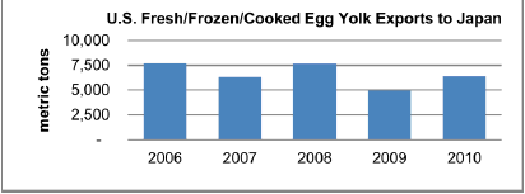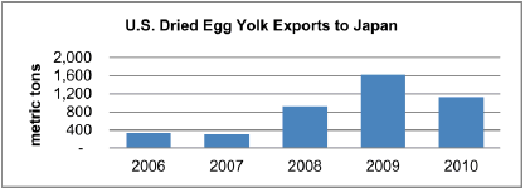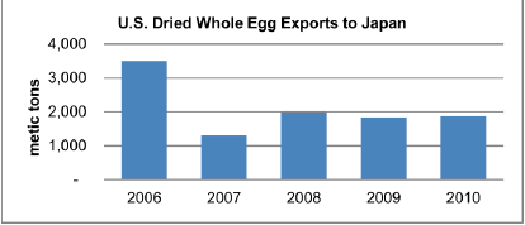



International Egg and Poultry Review: Japan
JAPAN - This is a weekly report by the USDA's Agricultural Marketing Service (AMS), looking at international developments concerning the poultry industry. This week's review looks at Japan after the earthquake and tsunami.A massive 9.0 magnitude earthquake and subsequent tsunami hit Japan's northeast Pacific coastal region on 11 March 2011. The catastrophe devastated cities, towns and villages of the prefectures located along the coast line. The most affected prefectures are Iwate, Miyagi, Fukushima and Ibaragi.
Japan’s Ministry of Agriculture, Forestry and Fisheries (MAFF) compiled its preliminary earthquake/tsunami damage estimates related to the livestock sector (as of 4 April). Total damages are estimated at ¥41.3 billion. Of this amount: ¥6 billion was from floods, run-off and death of animals/birds, and ¥35.3 billion in estimated damage to livestock sheds/facilities. By some accounts, the Japanese meat supply chain lost about 26,000 metric tons (MT) of poultry as the result of damage to infrastructure and power outages.
Within the 20-km radius of the crippled Fukushima nuclear plant, there were 870 head of dairy cattle, 2,500 head of beef cattle, 30,000 swine and 630,000 poultry. Farmers within the 20-km radius were evacuated and left their animals behind. It is too early to accurately estimate the extent of the damage to the Fukushima livestock industry.
The table below shows poultry population before the earthquake and tsunami in the suffered areas. This disaster caused estimated losses of five million laying hens and four million broilers.

Major constraints on production inputs (feed, electricity, water and fuel) for broiler and egg production in the country have started to ease. The prospect for second quarter (2011) broiler and egg supplies from affected Tohoku region seems decent. While facilities/factories of one or two of the larger scale broiler integrators located in the Tohoku region's coastal zone were incapacitated, the latest information post has received from MAFF suggests that the majority of other integrators/operators located inland are largely unaffected, but resumption of operations had been constrained by a lack of fuel, water and electricity.
There are about 3,100 large layer chicken operations in Tohoku. No large operations were hit by the tsunami. The supply of feed is improving but there are still problems. Some chicken farmers started forced moults, which allow the birds to survive with only water and limited feed for two weeks. As a result, the egg supply to the Tokyo market fell and the wholesale price of eggs soared in the Tokyo market (from ¥200 per kilo to ¥260 as of 5 April). However, demand from the Tokyo metropolitan area is being met by supplies from the Western/Central region. Increased egg prices will reflect higher transport costs, but the supply is not as tight as it was in March.
No large commercial hatcheries were damaged by the earthquake or tsunami. Even without this disaster, layer operations were decreasing in volume by 5.8 per cent per year, with 1.9 per cent reduction of bird number in Japan, according to the census statistics on 1 February 2009 by MAFF.
Miyazaki prefecture, the nation's second highest ranked broiler producing prefecture, had several outbreaks of highly pathogenic avian influenza (HPAI) early this year and production is still far from recovery. On 29 March, the Government of Japan had lifted all movement and shipping restrictions previously imposed in Miyazaki prefecture due to HPAI. The nation's domestic broiler supply prospects should improve during the second half of 2011. Until then, imported raw broiler meat and prepared products for retail and those locally utilised for the prepared food business should do well by covering a temporary shortage in domestic supply during the first half of this year.
Source: USDA/FAS GAIN Reports, news wires




Further Reading
| - | You can view the full report by clicking here. |








